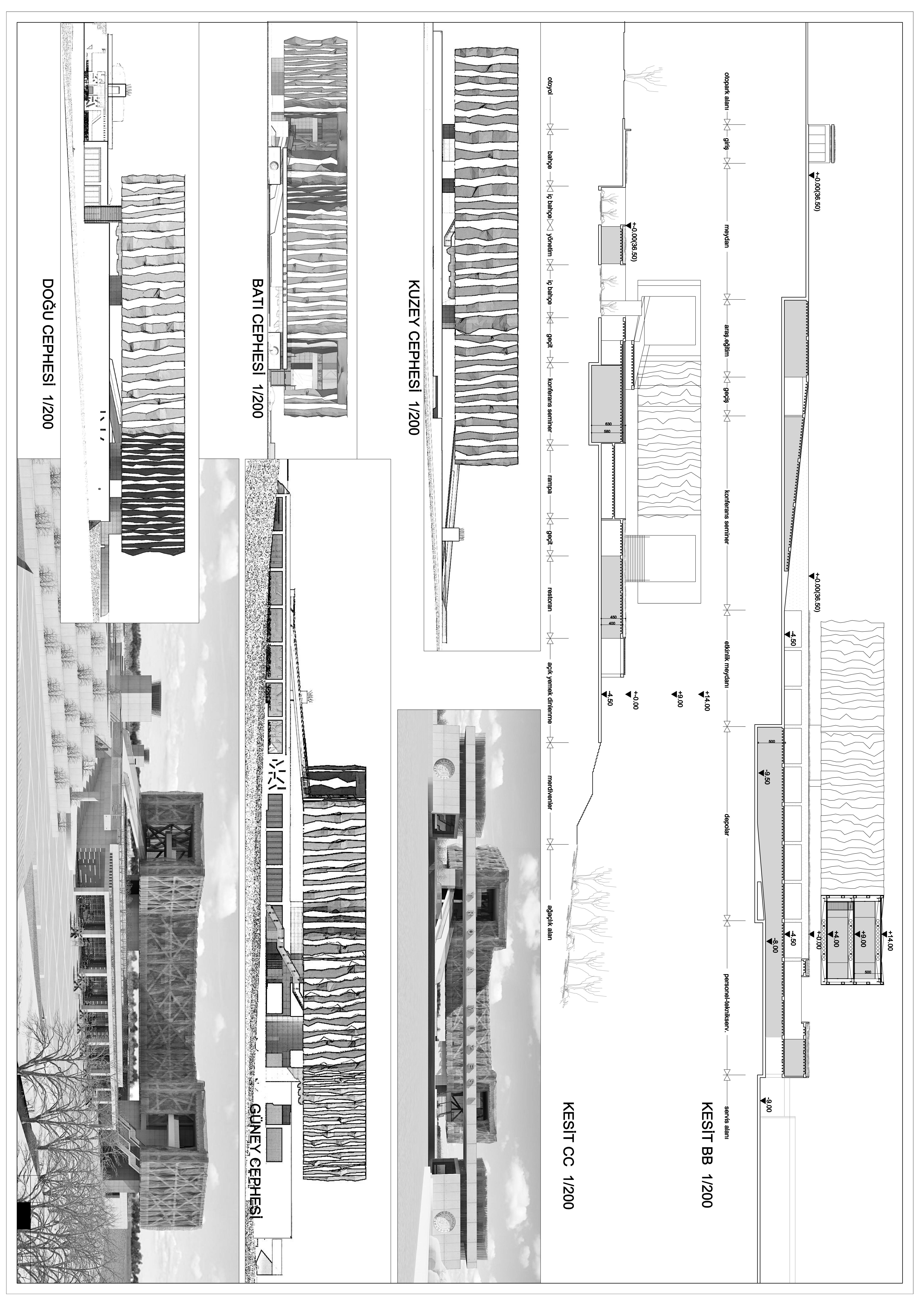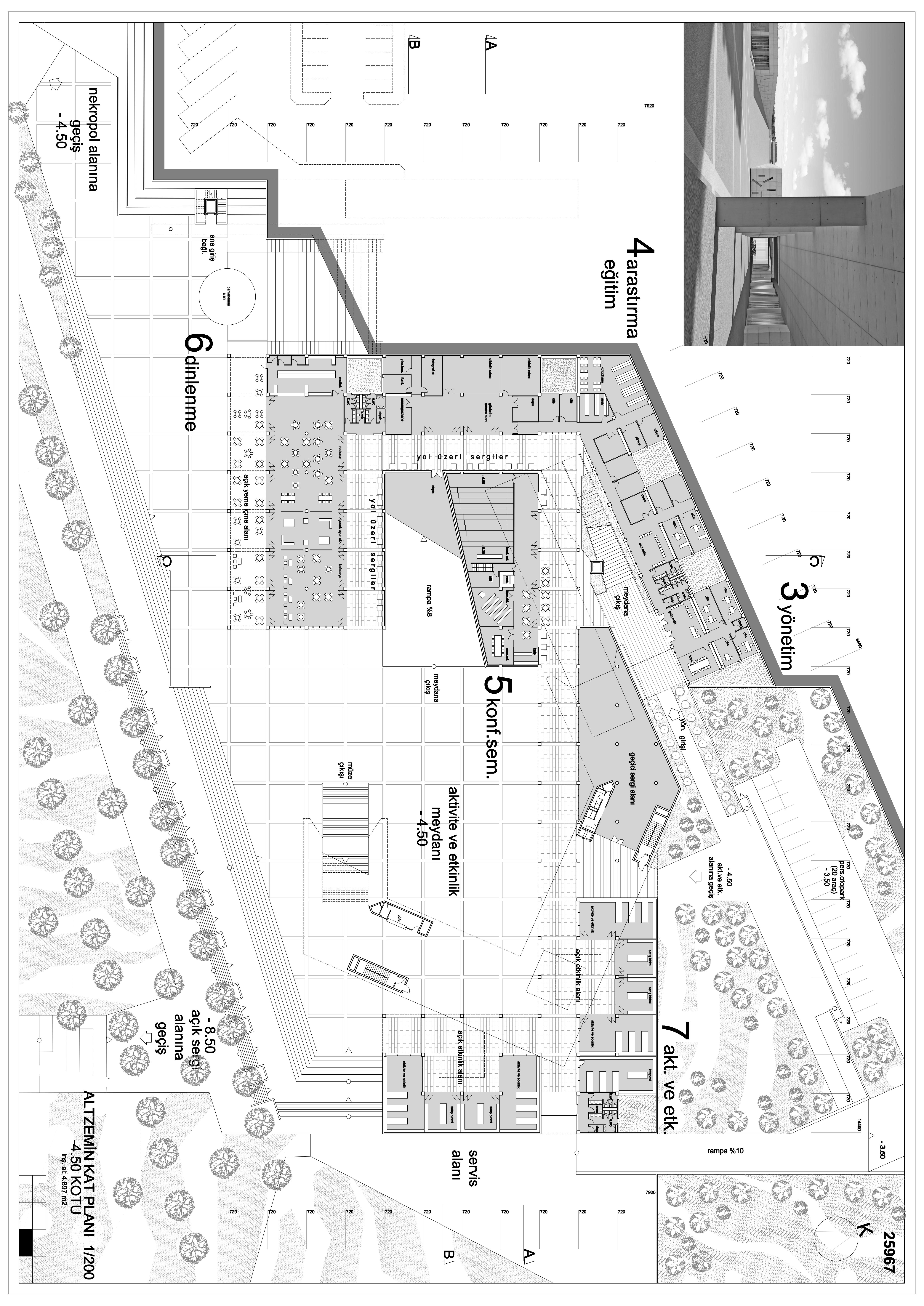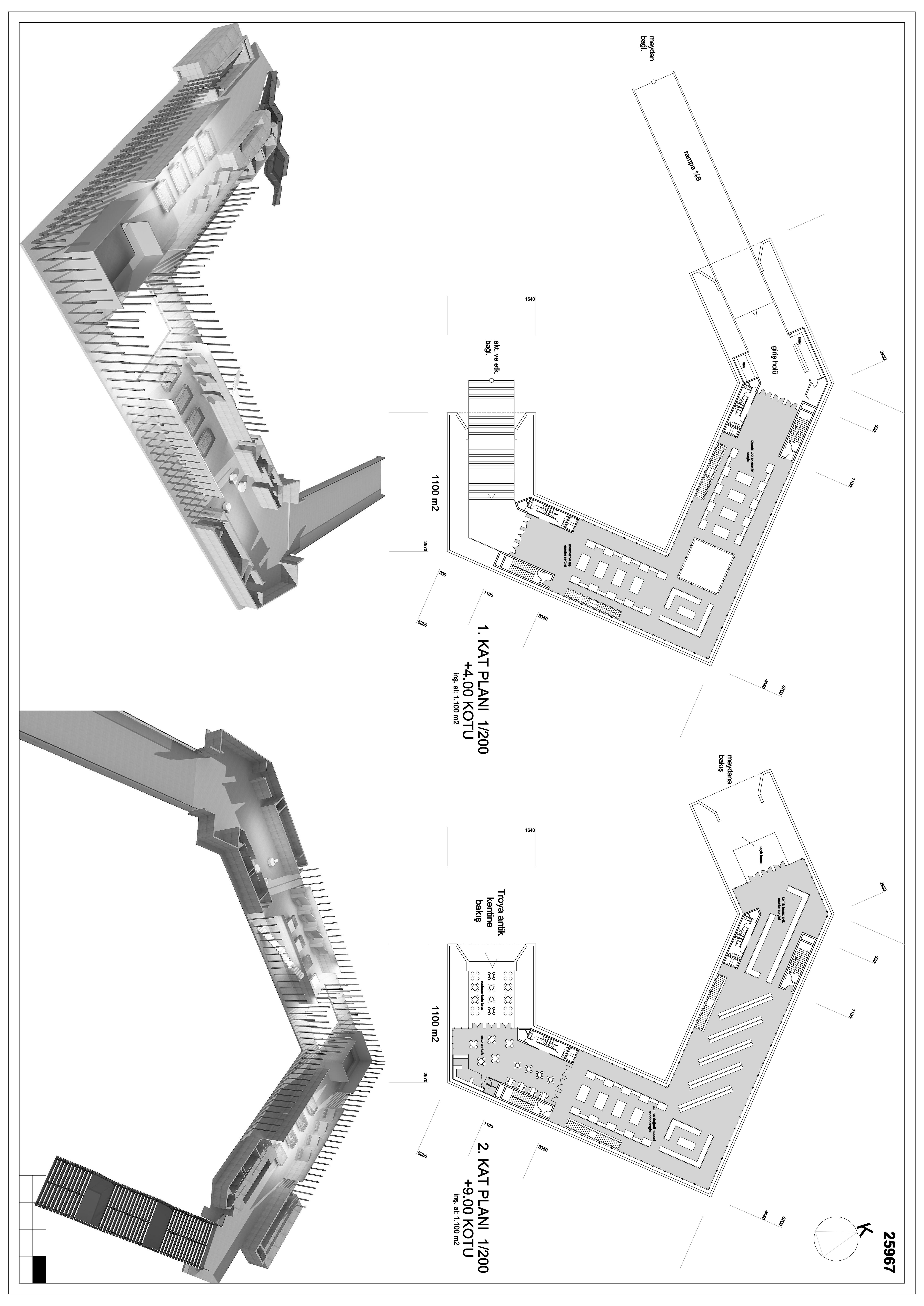TROYA MÜZESİ MİMARİ PROJE YARIŞMASI
MİMARİ AÇIKLAMA RAPORU
MİRAS ve MEKAN
Müzeler, dünya miraslarının geleceğe aktarıldığı mekanlardır. Bilgi, bilinç kazandırmak eğitmek duyarlılık heves aşılamak ve koruyarak mirası bir sonraki kuşaklara taşımak gibi çok önemli görevleri vardır. Günümüzün modern müzeleri sadece kendi ülkelerinden değil tüm dünyadan ziyaretçiler çekebilmektedir. Yeni müzecilik anlayışı sanal müze, dokunabilir müze, mobil müze ve vakıf müzesi gibi kavramlarla öne çıkmaktadır.
Troya bir miras ve gelecek kuşaklara bizler tarafından aktarılacak, geçmişin mirasını bugünün modern mekanları ile geleceğe iletmek gibi bir görevimiz var. Bu çağa ait bizi de gelecekte tanımlayacak mekanları yaratmamız gerekmektedir.. Troya mirası ancak böyle bir mekanla geleceğe taşınabilir.
Ülkemizde turizm her geçen yıl gelişme göstermekte ve Troya antik kenti ülke turizminde önemli bir ziyaret noktasını oluşturmaktadır. Ağırlıklı olarak yaz aylarında yoğunluk olduğundan mekanların oluşumunda bu önemli verilerden biri olarak kabul edilmiştir
Tasarımda ziyaretçilerin hareket tarzı incelenmiş ve önce Troya antik kentinin ziyaret edilip ardından müzeye gelineceği öngörüsü üzerine ulaşım kurgusu
oluşturulmuştur.
Troya dönüşü arsanın en üst ve antik kente en yakın ilk noktası (36.50 kotu) binanın -0.00 kotu olarak kabul edilerek ana otopark (otobüs ve otomobil) bu noktada konumlandırılmıştır. Arazinin meyilinden yararlanıp servis ve personel otoparkları da 33.00 kotunda planlanmıştır.
36.50 kotu bir karşılama meydanı ile desteklenmiş ve burası tüm grupların toplanma ve dağılma noktası olarak görülmüştür. Bu meydandan rampa ile ana müze binasına yada gene rampa ile etkinlik ve aktivite alanına geçerken merdivenle yönetim bölümüne bağlantı kurulmuştur.. Etkinlik ve aktivite meydanı müzenin sosyalleşme alanı ve katılımın olduğu noktadır. Bu yüzden açık ve yarı açık mekan kullanımına çok önem verilmiştir. Ziyaretçilerin ağırlıklı olarak yaz aylarını tercih ettikleri göz önüne alınarak kapalı alanların dış mekanlar ile bütünleşmesi sağlanmıştır.
Etkinlik alanı -4.50 kotunda dinlenme, konferans araştırma-eğitim ve yönetim bölümleriyle çevrelenmiştir. Bu meydan tüm etkinlikleri kucaklarken, kendisini arsanın alt kısımda yer alan mevcut ağaçlık alana açılmaktadır. Sürekli bir etkileşim içindedir. Dinlenme mekanları da ağaçlık alana yönlendirilerek günün yorgunluğunu hissettirmeyecek bir bakış açısı yakalanmak istenmiştir..
Alt zemin kotunda tüm mekanlar ışık ve havayı iç bahçelerden almakta ve tüm ilişkilerin hemzemin bir kotta olmasını sağlamaktadır.
Alt zemin kat kotu arazinin meyilinden faydalanarak 36.50 kotunun altında kurgulanmış
Ana müze binası meydanı çevreleyen Troyaya hakim bir formdadır. Troya düzlem üzerinde yerleşmiş bir tepe konumundadır. Müze de aynı konumda planmış ve bir düzlem üzerinde havada , meydanın üstünde askıda çelik bir yapı önerilmiştir.
Bu yapıya meydan dan bir ramp ile ulaşılmakta ziyaretçiler müzeyi dolaşarak diğer koldan etkinlik meydanına ulaşmaktadır. Müze içinde lineer bir yapı da izleme yolu oluşturulmuştur. 2. katta bulunan restoran ziyaretçilerin hem dinlenme noktası hem de Troya ya müze den bakış alanıdır.
Mevcut arsa içinde bulunana nekropel alanları da müzenin bir ziyaret noktası olarak görülmüş ve müzeye gelenlerin, bu alanlarda dolaşıp algılaması için tüm nekropel etrafında ahşap yollar oluşturularak, etkinlik ve aktivite alanlarının devamı gibi algılanması sağlanmaya çalışılmıştır. Ahşap, çevreye müdahale etmeyen gerektiğinde kolay sökülen bir malzeme olduğu için yol malzemesi olarak seçilmiştir.
Arsanın en düşük kotunda açık hava sergileri ve oyun alanları önerilmiş, bu alanlar araziye uyumlu merdivenler ile etkinlik alanına bağlanmıştır.
TROY MUSEUM ARCHITECTURAL DESIGN COMPETITION
ARCHITECTURAL DESCRIPTION REPORT
HERITAGE and SPACE
Museums serve as spaces where world heritage is preserved for future generations. They hold significant responsibilities such as imparting knowledge, raising awareness, inspiring enthusiasm, and preserving heritage to pass on to the next generations. Modern museums are capable of attracting visitors not only from their own countries but also from around the world. The new concept of museology is characterized by terms such as virtual museums, tactile museums, mobile museums, and foundation museums.
Troy is a heritage that will be transmitted to future generations by us, and we have a duty to convey the legacy of the past to the future through modern spaces of today. It is imperative for us to create spaces that will also define us in the future. The legacy of Troy can only be transported into the future with such a space.
Tourism in our country is developing every year, and the ancient city of Troy constitutes an important point of visit in the country's tourism. Since there is a predominantly high traffic during the summer months, this has been accepted as one of the important data in the formation of spaces. In the design, the movement patterns of visitors have been examined, and a transportation scheme has been created based on the assumption that Troy's ancient city will be visited first and then the museum.
Upon returning to Troy, the highest point of the site and the closest point to the ancient city (elevation 36.50) is considered as the building's reference point at ±0.00 elevation, with the main parking lot (for buses and cars) located at this point. Taking advantage of the slope of the terrain, service and staff parking lots are planned at an elevation of 33.00.
Elevation 36.50 is supported by a welcoming square, which serves as the gathering and dispersal point for all groups. From this square, a ramp connects to the main museum building, while stairs connect to the administrative section, both providing access to the event and activity area. The event and activity square serves as the museum's socialization area and point of engagement. Therefore, great emphasis is placed on the use of open and semi-open spaces. Considering that visitors predominantly prefer the summer months, indoor spaces are integrated with outdoor areas.
The event area, located at -4.50 elevation, is surrounded by relaxation, conference, research, education, and administrative sections. This square embraces all activities while opening itself to the existing wooded area at the lower part of the site. It maintains continuous interaction, with relaxation areas directed towards the wooded area to provide a refreshing perspective without feeling the fatigue of the day.
All spaces on the lower ground level receive light and air from inner courtyards, ensuring that all interactions occur at ground level. Designed to take advantage of the slope of the terrain, the lower ground level is situated below elevation 36.50, and the museum building is conceived as a floating space above all elevations, overlooking Troy.
The main museum building is in a commanding form overlooking the square, reminiscent of Troy's position as a hill settled on a platform. The museum is planned in the same position, with a steel structure proposed to float above the square, suspended in the air on a plane.
Access to this structure is via a ramp from the square, allowing visitors to explore the museum and reach the event square from the other branch. Inside the museum, a linear structure forms a viewing path. The restaurant on the second floor serves as both a resting point and a viewpoint overlooking Troy from the museum.
The existing necropolis areas within the site are also seen as a point of interest for the museum, and wooden pathways have been created around the entire necropolis to allow visitors to wander and perceive them, attempting to seamlessly integrate them as an extension of the event and activity areas. Wood was chosen as the material for the pathways as it is non-invasive to the environment and easy to dismantle when necessary.
At the lowest elevation of the site, open-air exhibitions and play areas are proposed, connected to the event area with stairs that blend with the terrain.

















